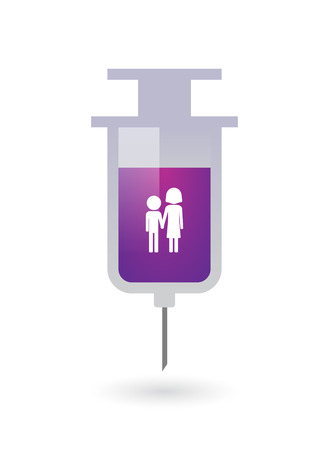Introduction to Swallowing Disorders in Adults
Swallowing is something most of us do without thinking, but for many adults, it can become a serious challenge. This problem is known as dysphagia. Understanding the basics of swallowing disorders and their impact helps highlight why a multidisciplinary team is so important in therapy.
Common Causes of Dysphagia in Adults
Dysphagia happens when there are problems moving food or liquid from the mouth to the stomach. It can be caused by a variety of medical conditions. Here’s an overview:
| Cause | Description |
|---|---|
| Stroke | Damage to the brain can affect muscles used for swallowing. |
| Neurological Disorders | Conditions like Parkinson’s disease, ALS, or MS can impact nerve signals and muscle coordination. |
| Head and Neck Cancer | Tumors or treatments like surgery and radiation may change swallowing structures or function. |
| Aging | Muscle strength and reflexes naturally decline with age, sometimes leading to swallowing difficulties. |
| Gastroesophageal Reflux Disease (GERD) | Stomach acid can irritate and damage the esophagus, making swallowing uncomfortable. |
| Trauma or Surgery | Injuries or surgeries involving the mouth, throat, or esophagus may disrupt normal swallowing. |
The Impact on Health and Quality of Life
Dysphagia doesn’t just make eating tough—it can have serious consequences for health and daily life. Here are some key ways it affects adults:
- Poor Nutrition and Dehydration: Trouble swallowing often leads to not getting enough nutrients or fluids.
- Aspiration Pneumonia: Food or liquids going down the wrong way into the lungs can cause infections.
- Anxiety and Social Isolation: Eating becomes stressful or embarrassing, so people might avoid meals with others.
- Reduced Independence: Some need help with meals or rely on feeding tubes, which changes their daily routines.
- Lower Quality of Life: The pleasure of eating is lost, impacting overall enjoyment of life.
Why Multidisciplinary Care Matters
No single professional can address all these challenges alone. That’s why a team approach—bringing together specialists like speech-language pathologists, dietitians, occupational therapists, physicians, and nurses—is essential for effective swallowing therapy in adults. This teamwork ensures that every aspect of a person’s well-being is considered during treatment.
2. Key Members of the Multidisciplinary Swallowing Team
When it comes to swallowing therapy for adults, a team approach is essential. Each professional brings unique skills and perspectives to help patients overcome swallowing difficulties, also known as dysphagia. Here’s a look at the key members of the multidisciplinary team and their roles in managing swallowing disorders:
Speech-Language Pathologists (SLPs)
SLPs are usually the primary providers in swallowing therapy. They assess the patient’s ability to swallow safely, recommend exercises or strategies to improve swallowing, and teach safe eating and drinking techniques. SLPs often use specialized tools like videofluoroscopic swallow studies to evaluate swallowing function.
Occupational Therapists (OTs)
OTs help patients adapt their environment and daily routines to make eating safer and easier. They might recommend adaptive utensils, proper seating positions, or hand exercises to improve self-feeding abilities.
Physicians
Doctors, including primary care physicians, neurologists, or ear, nose, and throat specialists (ENTs), diagnose medical causes of dysphagia and manage related health conditions. They may order diagnostic tests or prescribe medications to address underlying issues.
Nurses
Nurses monitor patients’ overall health, ensure they follow prescribed diets, and assist with feeding when needed. They also play a crucial role in preventing complications like aspiration pneumonia by observing for signs of choking or difficulty swallowing.
Dietitians
Dietitians develop individualized meal plans that meet nutritional needs while considering any restrictions due to swallowing difficulties. They suggest appropriate food textures and liquids to keep meals safe and enjoyable.
Social Workers
Social workers support patients and families by connecting them with community resources, counseling services, or support groups. They can also assist with navigating insurance coverage or arranging for home health care if needed.
Roles of Key Team Members at a Glance
| Team Member | Main Role in Swallowing Therapy |
|---|---|
| Speech-Language Pathologist | Assessment and treatment of swallowing disorders; patient education |
| Occupational Therapist | Environmental adaptations; improving self-feeding skills |
| Physician | Diagnosis and management of underlying medical issues |
| Nurse | Monitoring health status; supporting safe eating practices |
| Dietitian | Nutritional assessment; modifying diet consistency |
| Social Worker | Counseling; connecting with resources and support services |
This collaborative approach ensures that every aspect of a patient’s care is covered, leading to better outcomes in managing swallowing disorders.
![]()
3. Collaborative Assessment and Diagnosis
When it comes to treating adults with swallowing difficulties, also known as dysphagia, the multidisciplinary team plays a key role in assessment and diagnosis. In the United States, this team usually includes speech-language pathologists (SLPs), occupational therapists, physical therapists, dietitians, nurses, and sometimes physicians such as otolaryngologists or gastroenterologists. Each professional brings unique expertise to help identify the cause and severity of swallowing problems.
How the Team Works Together
The collaborative process starts with gathering information about the patients medical history, symptoms, and current eating habits. The SLP often leads the initial evaluation but works closely with other team members to get a full picture of the patient’s needs. This teamwork ensures that all aspects of the person’s health are considered, from nutrition and physical strength to medications and underlying conditions.
Assessment Tools Used in the U.S.
The assessment process typically involves both clinical (bedside) and instrumental tools. Here is a simple breakdown:
| Type of Assessment | Common Tools | Team Members Involved |
|---|---|---|
| Clinical (Bedside) Assessment | Oral mechanism exam Swallow trials with different textures Observation of signs like coughing or voice changes |
SLP Nurse Dietitian |
| Instrumental Assessment | Modified Barium Swallow Study (MBSS) Fiberoptic Endoscopic Evaluation of Swallowing (FEES) |
SLP Radiologist or Otolaryngologist Physician |
What Happens Next?
After assessments are complete, the team meets to discuss findings and make a diagnosis. They use the results to create an individualized treatment plan that addresses safety concerns (like risk of choking or aspiration), nutrition, and quality of life. By working together, they ensure that every angle is covered so patients receive the best possible care.
4. Team-Based Treatment Planning and Implementation
In swallowing therapy for adults, a team-based approach is essential to create personalized treatment plans that address the unique needs of each patient. The multidisciplinary team typically includes speech-language pathologists, occupational therapists, physical therapists, dietitians, nurses, physicians, and sometimes social workers. Each team member brings their own expertise, which helps in forming a well-rounded plan and ensuring the best possible outcomes for the patient.
How Individualized Treatment Plans Are Developed
The process starts with a comprehensive assessment. Each specialist evaluates the patient from their professional perspective. For example, the speech-language pathologist focuses on swallowing mechanics and safety; the dietitian assesses nutritional needs and dietary restrictions; the occupational therapist looks at self-feeding skills and adaptive equipment.
After assessments, the team meets to discuss their findings and share insights. This open communication allows each member to contribute recommendations based on their area of expertise. Together, they set goals tailored to the patients medical history, current abilities, personal preferences, and lifestyle.
Roles of Team Members in Swallowing Therapy
| Team Member | Main Role in Treatment Planning |
|---|---|
| Speech-Language Pathologist (SLP) | Leads swallowing assessments; designs exercises to improve swallow safety and efficiency |
| Dietitian | Advises on safe food textures and nutritional needs |
| Occupational Therapist (OT) | Assesses feeding independence; recommends adaptive utensils or positioning strategies |
| Nurse | Monitors overall health; coordinates care during hospital stays or at home |
| Physician | Oversees medical management; orders diagnostic tests as needed |
| Physical Therapist (PT) | Helps with posture and core strength needed for safe eating |
| Social Worker | Supports emotional well-being; assists with community resources or insurance matters if required |
Implementation of the Treatment Plan
Once the plan is agreed upon, each team member takes responsibility for implementing their part. For instance, the SLP may lead swallowing exercises during therapy sessions while coordinating with nursing staff to ensure recommendations are followed during meals. The dietitian provides meal plans that are both safe and enjoyable. OTs may work one-on-one with patients to practice using special cups or utensils.
Ongoing Communication and Adjustments
The team regularly checks in to review progress and make adjustments as needed. If a patient has trouble with a particular food texture or technique, feedback is shared quickly so modifications can be made. This collaborative effort ensures that challenges are addressed early and that therapy remains effective and patient-centered.
5. Patient and Family Involvement in the Therapeutic Process
The Value of Education in Swallowing Therapy
When adults face swallowing difficulties, or dysphagia, it can be overwhelming for both patients and their families. In the American healthcare system, one of the most important roles of the multidisciplinary team is to provide clear and practical education. This means explaining what dysphagia is, why it happens, and how therapy can help improve swallowing safety and quality of life. Team members like speech-language pathologists, nurses, and dietitians use simple language and real-life examples to make sure everyone understands the process. They also provide written materials or videos that families can review at home. The goal is to empower patients and their loved ones with knowledge so they feel confident in making decisions about care.
Cultural Sensitivity: Respecting Diverse Backgrounds
America is a melting pot of cultures, beliefs, and traditions. The multidisciplinary team recognizes that every patient’s background shapes their health experiences and needs. For example, some families may have specific dietary customs or religious restrictions that affect what foods are acceptable during therapy. Others might prefer different communication styles or have unique family dynamics. By asking questions, listening carefully, and adapting recommendations, therapists build trust and make sure care fits each individual’s values. This cultural sensitivity ensures better engagement and satisfaction throughout the therapy journey.
Providing Support Throughout Therapy
Swallowing therapy can sometimes feel stressful or frustrating for patients and their families. That’s why emotional support is just as important as medical expertise. The team encourages open conversations about fears, challenges, or setbacks. Social workers or case managers can help families find community resources like support groups or financial assistance programs if needed.
Ways the Multidisciplinary Team Supports Patients and Families
| Type of Support | Examples |
|---|---|
| Education | Personalized instructions, handouts, video demos |
| Cultural Sensitivity | Adapting diets to cultural preferences, respecting beliefs |
| Emotional Support | Counseling sessions, connecting with peer support groups |
| Practical Assistance | Navigating insurance paperwork, arranging transportation for appointments |
The Role of Family in Successful Outcomes
Involving family members makes a real difference in recovery. Families often help with exercises at home, monitor for signs of choking or aspiration, and encourage their loved one to stick with therapy routines. The team welcomes family participation in meetings and training sessions so everyone feels like a partner in care. This teamwork approach leads to safer swallowing practices and helps patients maintain dignity and independence as much as possible.

